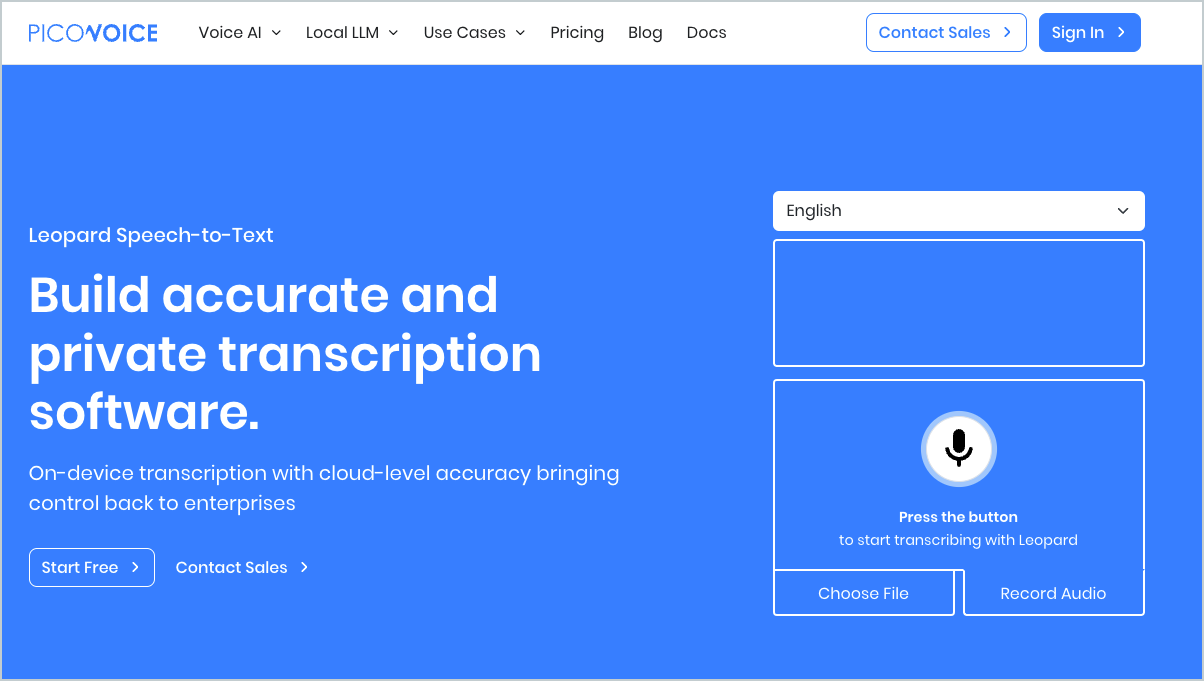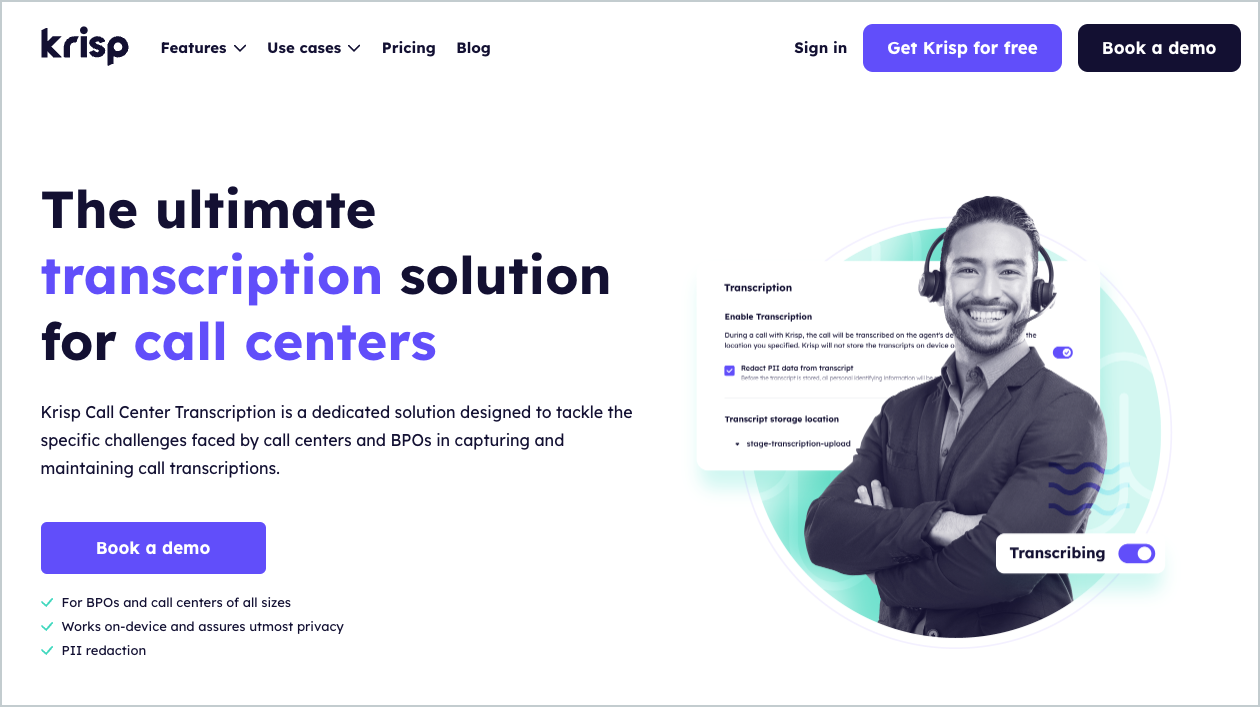Streaming speech-to-text technology has revolutionized the way enterprises handle communication, particularly in call centers. By converting spoken language into written text in real-time, businesses can significantly improve customer service, streamline operations, and enhance data management. This advanced technology leverages sophisticated algorithms and AI to ensure accuracy and efficiency, making it an indispensable tool for modern enterprises. In this guide, we provide a comprehensive overview of streaming speech-to-text solutions, their applications, industry trends, and the leading providers in 2024.
How Speech-to-Text Technology Works
Understanding the mechanics behind speech-to-text technology is crucial for appreciating its benefits. Here’s a detailed breakdown of the process:
Step-by-Step Process
- Audio Input: The process begins with capturing audio via a microphone or telephony system.
- Microphone Specifications: High-quality microphones ensure clarity. Specifications like sensitivity, frequency response, and signal-to-noise ratio (SNR) are critical.
- Telephony Systems: Digital systems are preferred for their noise reduction capabilities and higher fidelity compared to analog systems.
- Pre-Processing: The captured audio is cleaned up to remove background noise and enhance clarity.
- Noise Reduction Algorithms: Techniques like spectral subtraction, Wiener filtering, and deep learning-based denoising are employed.
- Echo Cancellation: Important in telephony, it removes echoes that can confuse the transcription algorithms.
- Feature Extraction: Key features from the audio, such as phonemes, are extracted and analyzed.
- Acoustic Feature Extraction: Methods like Mel-frequency cepstral coefficients (MFCCs) and spectrogram analysis are used to capture important audio features.
- Temporal Features: Techniques like dynamic time warping (DTW) help in aligning sequences of varying speeds.
- Acoustic Model: These features are then matched against an acoustic model that represents the sounds of a language.
- Hidden Markov Models (HMMs): Traditional models that segment and recognize patterns in the audio data.
- Deep Neural Networks (DNNs): More advanced models that provide higher accuracy by learning complex patterns in large datasets.
- Language Model: The matched sounds are processed using a language model to form coherent words and sentences.
- N-grams and Statistical Models: Used to predict the next word in a sequence based on the probability of word combinations.
- Recurrent Neural Networks (RNNs) and Transformers: Modern approaches that handle longer dependencies and context, leading to more accurate transcriptions.
- Text Output: Finally, the processed data is converted into text and displayed in real-time.
- Real-time Text Rendering: Ensures minimal delay between speech and text output, crucial for live applications.
- Post-Processing: Includes tasks like punctuation addition, capitalization, and correcting common transcription errors.

Leading Use Cases of Streaming Speech-to-Text Technology
Streaming Speech-to-Text technology has a wide range of use cases across various industries and applications. This technology, which converts spoken language into written text in real-time, is proving to be invaluable for enhancing communication, accessibility, and productivity. Here are some key industries and how they are utilizing Streaming Speech-to-Text technology:
Call Centers
- Enhanced Customer Service: Immediate transcription helps in better understanding customer issues and providing quick resolutions.
- Real-Time Assistance: Transcripts enable supervisors to provide real-time guidance to agents during calls.
- Customer History: Agents can quickly review previous transcripts to understand the customer’s history.
- Operational Efficiency: Reduces the time spent on manual note-taking and data entry.
- Automated Workflows: Integration with CRM systems can automate task creation based on call transcripts.
- Resource Allocation: Transcripts help in analyzing call volumes and adjusting staffing levels accordingly.
- Data Analysis: Enables detailed analysis of customer interactions for insights and improvements.
- Sentiment Analysis: Textual data allows for sentiment analysis, helping to gauge customer satisfaction.
- Trend Analysis: Identifying common issues and trends from transcripts can inform product and service improvements.
Business Meetings
- Accurate Minutes: Provides real-time, accurate minutes of meetings.
- Automated Summarization: Tools can summarize key points and actions from meeting transcripts.
- Follow-up Actions: Transcripts ensure that action items are clearly documented and followed up.
- Accessibility: Assists in making meetings accessible to hearing-impaired participants.
- Live Captions: Real-time transcription provides live captions for participants.
- Translatable Transcripts: Transcripts can be easily translated into other languages for non-native speakers.
- Searchable Records: Creates searchable records of meetings for future reference.
- Keyword Search: Allows users to quickly find specific discussions or decisions in meeting transcripts.
- Knowledge Management: Integrates with knowledge management systems to archive and retrieve meeting content.
Media and Broadcasting
- Live Subtitling: Provides real-time subtitles for live broadcasts.
- Broadcast Delay Compensation: Ensures that subtitles are synchronized with live audio.
- Multilingual Support: Supports multiple languages for international broadcasts.
- Content Creation: Facilitates the creation of written content from audio sources.
- Transcription for Editing: Editors can use transcripts to streamline the video and audio editing process.
- SEO Optimization: Transcripts can be used to generate searchable text content for SEO purposes.

Streaming Speech-to-Text Solutions in 2024
Here are some leading providers offering robust transcription services:
Picovoice Leopard

- Overview: Picovoice Leopard provides highly accurate streaming speech-to-text services optimized for embedded systems.
- On-Device Processing: Ensures privacy and reduces latency by processing audio locally.
- Low Latency: Provides near-instantaneous transcription suitable for real-time applications.
- Privacy-Preserving: No audio data leaves the device, ensuring maximum privacy.
Azure Speech-to-Text

- Overview: Microsoft’s Azure Speech-to-Text service offers comprehensive transcription capabilities as part of its Azure Cognitive Services suite.
- Customizable Models: Users can train custom models to improve accuracy for specific terminologies and accents.
- Real-Time and Batch Transcription: Supports both real-time and batch processing, allowing for flexible use cases.
- Multi-Language Support: Provides transcription in over 60 languages and dialects.
Krisp Call Center Transcription

- Overview: Krisp’s solution is specifically designed for call centers, offering not only on-device transcription but background noise cancellation and accent localization features as well.
- Customizable Features: Users can fine-tune the noise cancellation and accent localization to better fit the specific needs of their call centers.
- On-Device Transcription: Supports on-device transcription, ensuring accurate representation of calls.
- Background Noise Cancellation: Utilizes advanced AI to filter out background noises, enhancing call clarity and customer experience.
- Accent Localization: Automatically adjusts to various accents, ensuring clear and accurate transcription regardless of the speaker’s accent.
Krisp’s Transcription Software: Leading the Way
Krisp Call Center Transcription employs noise-robust deep learning algorithms for on-device speech-to-text conversion. Specifically, the process consists of several stages:
- Processes and turns speech into unformatted text.
- Adds punctuation, capitalization, and numerical values.
- Removes PII/PCI and filler words on-device and in real time.
- Assigns text to speakers with timestamps.
- Temporarily stores the encrypted transcript locally.
- Safely transmits the transcript to a private cloud.
Technical Advantages of Krisp for Enterprise Call Centers
-
Superior Transcription Accuracy
- 96% Accuracy: Leveraging cutting-edge AI, Krisp ensures high-quality transcriptions even in noisy environments, boasting a Word Error Rate (WER) of only 4%.
On-Device Processing
- Enhanced Security: Krisp’s desktop app processes transcriptions and noise cancellation directly on your device, ensuring sensitive information remains secure and compliant with stringent security standards.
Unmatched Privacy
- Real-Time Redaction: Ensures the utmost privacy by redacting Personally Identifiable Information (PII) and Payment Card Information (PCI) in real-time.
- Private Cloud Storage: Stores transcripts in a private cloud owned by customers, with write-only access, ensuring complete control over data.
Centralized Solution Across All Platforms
- Cost Optimization: By centralizing call transcriptions across all platforms, Krisp CCT optimizes costs and simplifies data management.
- Streamlined Operations: Eliminates the need for multiple transcription services, making data handling more efficient.
No Additional Integrations Required
- Effortless Integration: Krisp’s plug-and-play setup integrates seamlessly with major Contact Center as a Service (CCaaS) and Unified Communications as a Service (UCaaS) platforms.
- Operational Efficiency: Requires no additional configurations, ensuring smooth and secure operations from the start.
Wrapping up
Streaming speech-to-text technology is a game-changer for enterprises, particularly in call centers. It enhances customer service, operational efficiency, and data management. Krisp’s transcription software, with its superior noise cancellation and on-device transcription capabilities, is a standout choice for businesses looking to leverage this technology.


